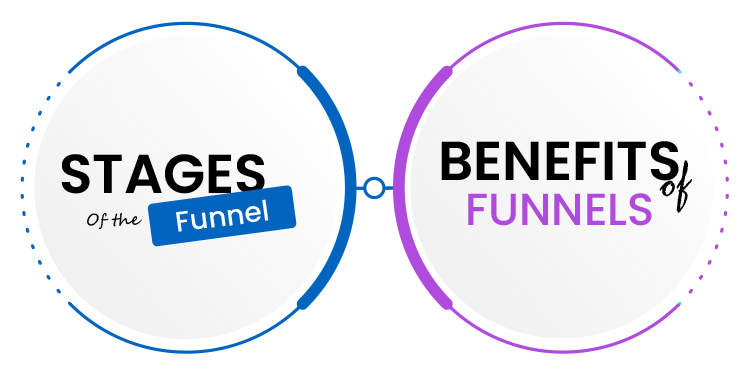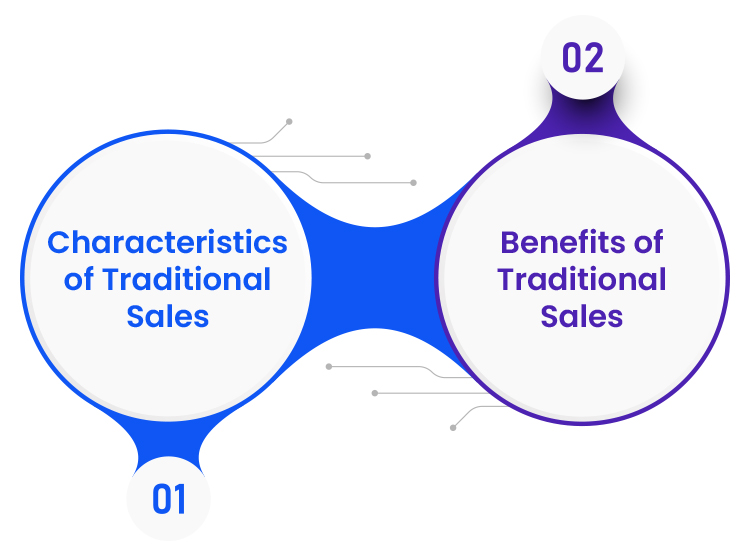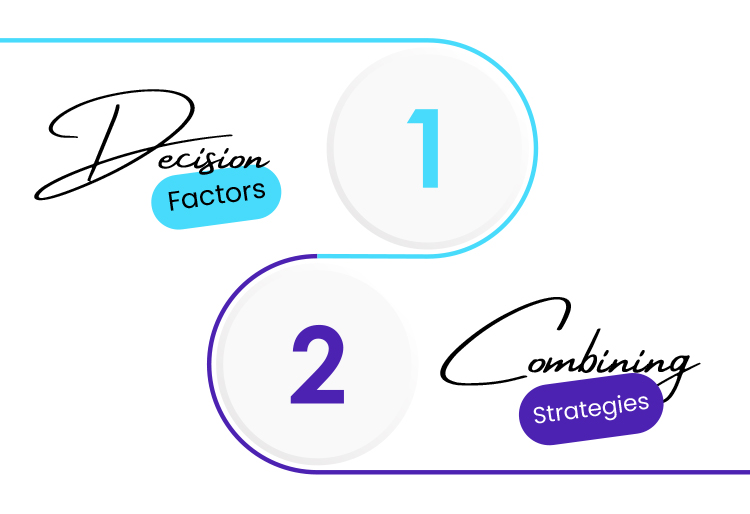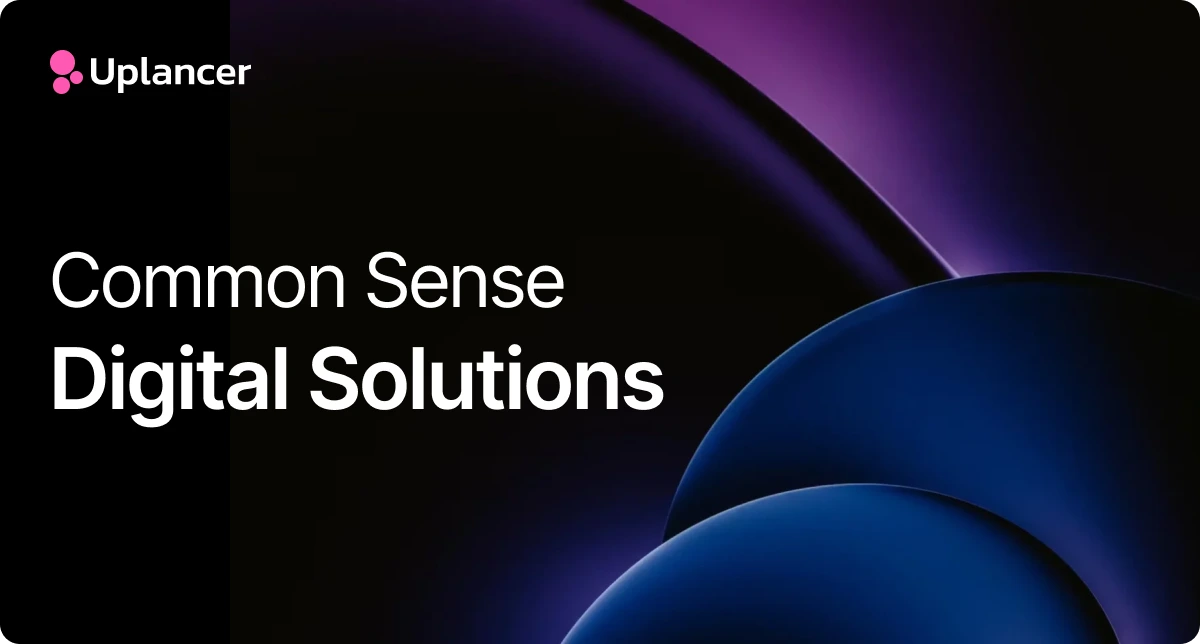Funnels vs. Traditional Sales: Unveiling the Benefits and Differences

In today’s business landscape, sales strategies play a pivotal role in determining a company’s success. With various approaches available, two main contenders stand out: Funnels and Traditional Sales. These strategies are like the gears that power the engine of your business growth. In this blog, we’ll take a close look at these approaches, delving into their benefits, differences, and when to use each method.
Understanding Funnels and Traditional Sales
To delve deeper into the realm of sales strategies, it’s essential to grasp the fundamental concepts of Funnels and Traditional Sales. These two approaches represent distinct paths towards achieving your business objectives, and understanding them is crucial for crafting a successful sales strategy tailored to your audience.
Funnels: Imagine a funnel – wide at the top and gradually narrowing down. Funnels in sales follow a similar concept. They’re structured sequences of stages that guide potential customers through a journey, with the ultimate goal of converting them into paying customers. These stages, namely Awareness, Interest, Decision, and Action, provide a systematic framework for nurturing leads and driving sales. Each stage serves a specific purpose, from creating initial awareness to encouraging decisive actions.
Traditional Sales: On the other hand, Traditional Sales are rooted in direct, personal interactions. This approach involves engaging customers face-to-face or through direct communication channels to promote products or services and close deals. Traditional Sales capitalise on building relationships, understanding customer needs in real-time, and utilising persuasive techniques to facilitate immediate purchases.
In essence, the choice between Funnels and Traditional Sales isn’t about picking one over the other but recognizing which strategy complements your audience’s behaviour and preferences.
Funnels: A Comprehensive Examination
In the realm of modern sales strategies, Funnels stand as a cornerstone, meticulously designed to guide potential customers through a structured journey.

A. Stages of the Funnel
Awareness: The commencement of the funnel involves establishing a connection with the target audience. At this stage, the focus is on creating brand awareness and introducing the offerings in a compelling manner.
Interest: Once awareness is established, the journey transitions into capturing the audience’s interest. This phase is characterised by presenting value propositions, engaging content, and addressing pain points to evoke curiosity.
Decision: The decision phase guides the audience towards making an informed purchase decision. This involves providing detailed information, addressing potential concerns, and emphasising the unique benefits of the product or service.
Action: The final stage of the funnel is the call to action. Here, the audience is encouraged to take a specific action, such as making a purchase, subscribing, or signing up. The focus is on converting interest and intent into a tangible commitment.
B. Benefits of Funnels
The Funnels approach offers a range of substantial benefits that contribute to its effectiveness in driving sales and cultivating customer relationships:
Personalised Experience: Funnels excel in tailoring the customer journey. By segmenting the audience and customising interactions based on preferences and behaviours, businesses can deliver a highly personalised experience that resonates deeply.
Data-Driven Decisions: A fundamental advantage of Funnels is their data-rich nature. Every interaction within the funnel generates valuable insights into customer behaviour. This data can be harnessed to make informed decisions, refine strategies, and optimise the entire sales process.
Improved Conversion Rates: Funnels are adept at nurturing leads and guiding them towards conversion. Through strategic engagement and a gradual progression of stages, businesses can experience improved conversion rates, turning interested prospects into loyal customers.
Customer Retention: Funnels extend beyond the point of purchase. The post-conversion phase focuses on building enduring customer relationships through follow-ups, nurturing, and engagement. This approach contributes to long-term customer retention and loyalty.
Traditional Sales: Time-Tested Techniques
In the ever-evolving landscape of sales, traditional methods stand as steadfast pillars of engagement, relying on the power of personal connections and immediate interactions. Let’s delve into the characteristics that define traditional sales and uncover the array of benefits they offer.

A. Characteristics of Traditional Sales
Direct Approach: Traditional Sales operate on the principle of direct engagement. This approach involves interacting with customers on the spot, enabling real-time communication and immediate response to queries or concerns.
Face-to-Face Interactions: Central to Traditional Sales is the art of face-to-face interaction. These personal encounters foster trust, allowing customers to gauge authenticity and establish genuine connections with the sales representatives.
Limited Reach: Unlike expansive digital platforms, Traditional Sales typically target a specific audience within a defined location. This focused approach allows for tailored messaging and a more concentrated effort in engaging potential customers.
B. Benefits of Traditional Sales
Instant Gratification: Traditional Sales offer the allure of instant gratification. Customers experience immediate satisfaction from their purchases, as there’s no waiting period for shipping or delivery.
Tangible Experience: Engaging in Traditional Sales provides customers with a tangible experience. They can physically interact with products, assessing their quality, size, and features before making a purchase decision.
Relationship Building: The cornerstone of Traditional Sales lies in building relationships. In-person interactions allow for genuine connections, enabling sales representatives to understand customer needs and preferences on a deeper level.
Local Impact: Embracing Traditional Sales fosters a sense of community and local support. By engaging with local businesses and establishments, customers contribute to the growth of their communities, further enriching the local economy.
Understanding the Choice: Funnels vs. Traditional Sales
businesses often encounter a significant decision point – whether to use Funnels or Traditional Sales methods. The important differences between these options help businesses understand when to use each approach.

Decision Factors
Product Type: The complexity and nature of the product wield considerable influence. Funnels excel when unravelling intricate offerings, guiding customers step-by-step. For simpler products, Traditional Sales might shine, offering immediate clarity and personal guidance.
Target Audience: The age, preferences, and online behaviour of your audience are key considerations. Funnels align seamlessly with digitally savvy audiences, while Traditional Sales resonate with those valuing personal interactions.
Business Goals: The focal point of your objectives—short-term sales versus long-term relationships—plays a substantial role. Funnels expedite transactions, while Traditional Sales foster enduring customer connections.
Combining Strategies
The art of harmonising Funnels and Traditional Sales reveals a holistic approach that captures the best of both worlds:
Integrating Online and Offline Elements: A seamless blend of digital and personal interactions enhances customer engagement. The online sphere casts a wide net, while face-to-face interactions solidify trust.
Examples of Successful Hybrid Strategies: Numerous businesses have successfully navigated the hybrid route. An online funnel might lead to an offline event, creating a powerful fusion that caters to varied preferences.
Adapting to Industry and Market Trends: The flexibility to adapt strategies based on industry shifts and market trends ensures relevance and efficacy. The integration of tech-driven innovations with traditional values can yield exceptional outcomes.
Conclusion
Sales strategies are not one-size-fits-all; they are tools to be wielded thoughtfully based on the context and objectives at hand. Funnels, with their structured stages and data-driven insights, excel in guiding customers along a precise journey, optimising conversions, and nurturing lasting relationships. On the other hand, Traditional Sales, steeped in personal interactions and immediacy, establish trust, create tangible experiences, and foster local connections.
The decision between these two approaches isn’t a matter of choosing one over the other, but rather discerning which strategy aligns best with your product, target audience, and business objectives. Complex products may find a home within the intricacies of a funnel, while simpler offerings could thrive under the authenticity of Traditional Sales. Digital natives might respond favourably to the convenience of online funnels, while those valuing personal touch might be won over through Traditional Sales.
Moreover, the power of integration and adaptability cannot be overstated. A hybrid approach, weaving together elements of both Funnels and Traditional Sales, can create a robust and resilient sales strategy. By embracing change and staying attuned to industry trends, businesses can ensure their strategies remain effective and relevant.












